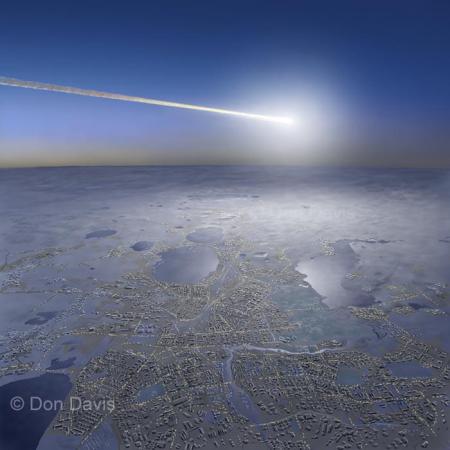Near-Earth Objects: Finding Them Before They Find Us by Donald K. Yeomans. Here’s a popular-audience space science book that I wasn’t aware of, just published in October 2012 (copyright 2013), with a practical and direct title. 🙂 And as a result of the Chelyabinsk meteor, his book is number one in a specialized subcategory at Amazon: #1 in Books > Professional & Technical > Professional Science > Astronomy & Space Science > Comets, Meteors & Asteroids
Youmans of course is an NASA expert of long-standing repute in these areas, so I’ve just ordered this for myself and in appreciation of his decades of effort to caution the world. Happily, it’s a slim 192 page book with only a U$16.37 impact to the wallet at Amazon. 12 of these pages are one of the best and most thorough indexes I’ve ever seen in terms of including subheadings within an entry.
This is the best of these recommended Earth-impact books for the public, with ten clear and succinct chapters.
Near-Earth Objects: Finding Them Before They Find Us by Donald K. Yeomans.
 copyright Don Davis
copyright Don Davis

